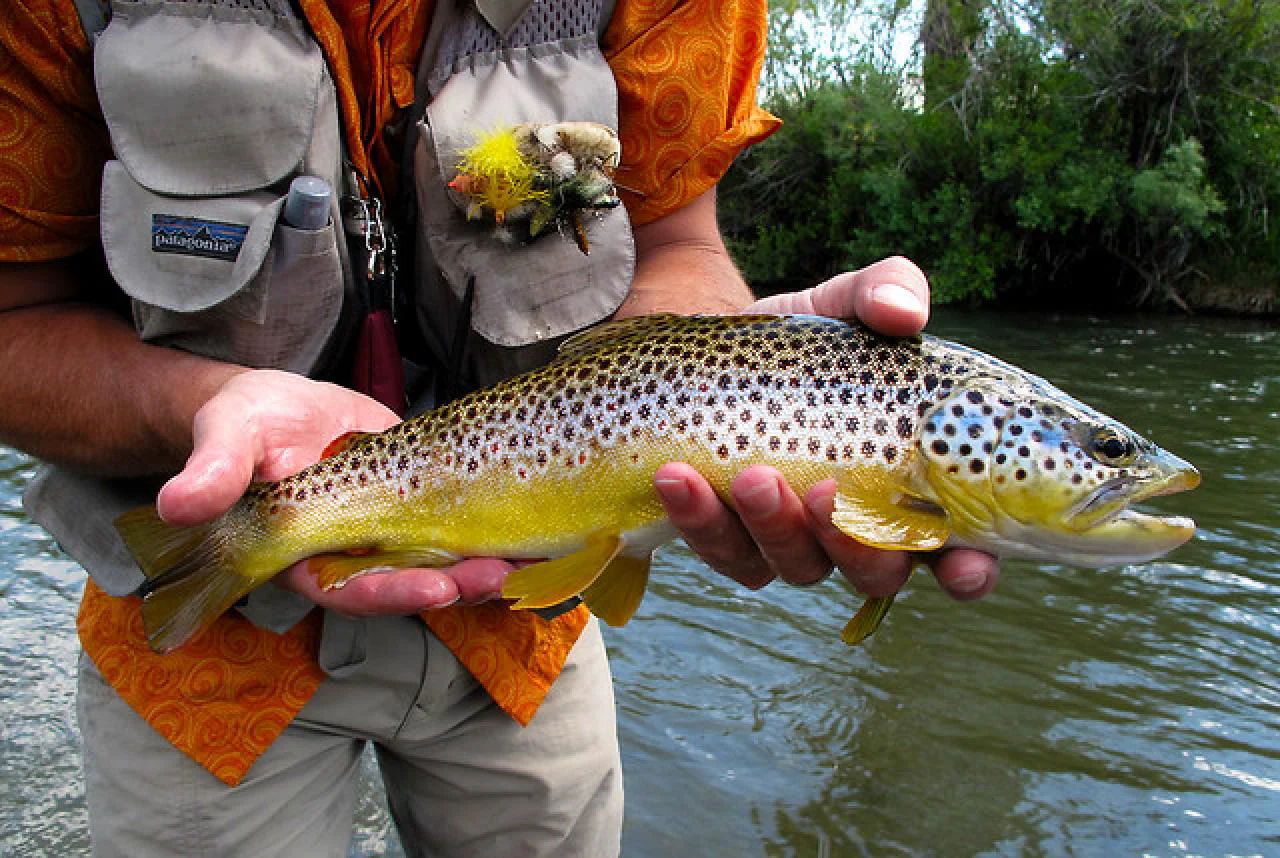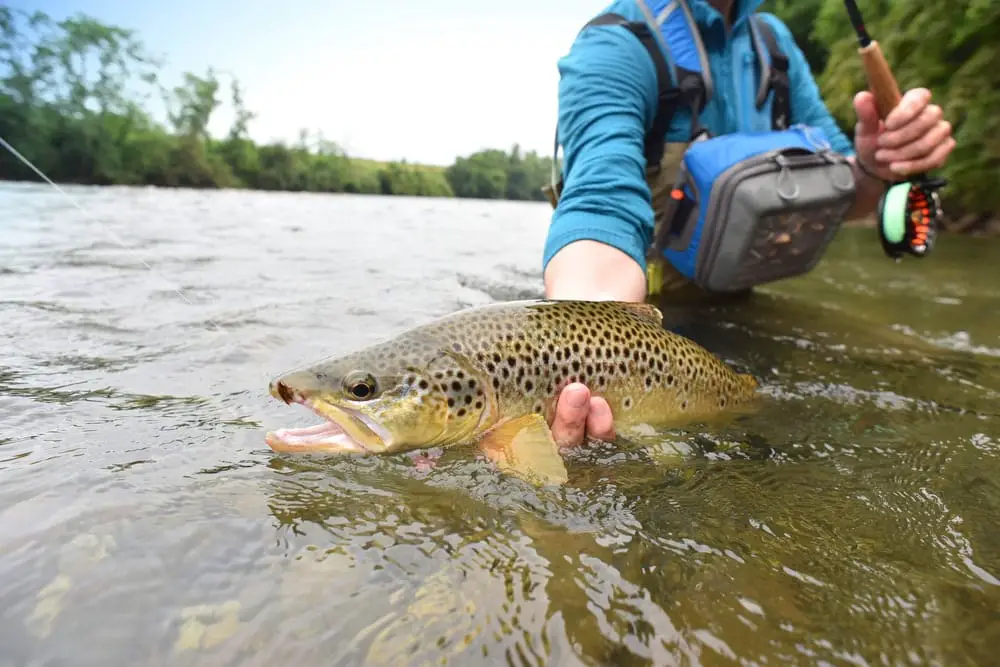Fishing for trout can feel like a perfect dance between angler and fish—each side trying to outwit the other. If you’ve ever stared at a rack of “lures for trout” wondering which one might turn a curious peek into a fierce strike, you’re not alone. In this guide, we’ll dive deep into trout ecology, break down the main types of trout lures, and give you practical tips for selecting and presenting the right bait in any season or water condition. By the end, you’ll know exactly which “lures for trout” deserve a spot in your tackle box.
1. Why “Lures for Trout” Matter
Most anglers know that live bait—worms, minnows, grubs—can catch trout. But artificial lures offer unique advantages:
Reusability & Durability. Modern “lures for trout” can be cast and retrieved dozens of times without falling apart.
Targeted Action. You control how fast or slow your lure swims, vibrates, or sinks—dialing in exactly what a trout wants.
Versatility. From murky ponds to rushing mountain streams, there’s an artificial lure optimized for every scenario.
However, the sheer variety—spoons, spinners, crankbaits, soft plastics, flies—can overwhelm newcomers. Understanding trout feeding behavior is the key to narrowing down your choices.
2. Trout Habitat & Feeding Patterns
Trout species (brown, rainbow, brook, cutthroat) share certain preferences but also exhibit unique quirks:
Natural Diet
Insects: Aquatic nymphs, emerging mayflies, caddisflies.
Crustaceans: Small scuds, freshwater shrimp in some waters.
Smaller Fish: Tiny minnows or juvenile baitfish, especially for larger trout.
Feeding Zones
Surface: When insects hatch or fall, trout eagerly take flies or floating lures.
Mid‑water: Active feeding in pools or thermoclines—ideal for crankbaits or sinking soft plastics.
Bottom: Sedentary trout or those in cold water may pick at nymph imitations or weighted spoons.
Daily Activity
Morning & Evening “Sweet Spots” see the most surface action.
Midday in clear, shallow streams can shut trout down—consider deeper presentations.
Knowing where and how trout feed lets you choose “lures for trout” that mimic the right prey at the right depth and pattern.
3. Common Types of “Lures for Trout”
3.1 Hard Baits
Crankbaits, with their diving lips, reach preset depths when retrieved. Great for mid‑water and bottom‑hugging trout.
Spinners feature a rotating blade that flashes and vibrates—perfect for triggering reaction strikes in stained water.
Spoons wobble on the drop and flash like panicked baitfish; fantastic for both stillwaters and currents.
3.2 Soft Plastics
Grubs & Worms: Rigged on jigheads, these imitate subtle undulations of real worms or leeches.
Minis: Tiny twister tails and paddle baits that mimic juvenile baitfish.
Soft plastics excel when trout get picky and you need a slow, tantalizing presentation.
3.3 Flies
Dry Flies rest on the surface—ideal during hatch peaks.
Nymphs sink just below the surface film, matching bug stages.
Streamers imitate minnows or leeches, drawn through deeper slots.
Fly anglers rely heavily on “lures for trout” that not only look right, but also drift or swim with lifelike motion.
4. Seasonal & Weather Considerations
Choosing “lures for trout” isn’t one‑size‑fits‑all. Seasons and conditions matter:
| Season | Water Temp | Lure Style | Color & Action |
|---|---|---|---|
| Spring | 45–60°F | Medium cranks, streamers | Natural greens, browns; active retrieves |
| Summer | 60–75°F | Deep divers, nymphs | Subtle patterns; slow, steady retrieves |
| Autumn | 50–65°F | Bright spoons, small jigs | Golds, oranges; erratic twitches |
| Winter | 35–50°F | Micro spoons, soft plastics | Pale whites, grays; very slow drops |
Warm, sunny days push trout deeper—opt for sinking soft plastics or deep crankbaits.
Cloudy or overcast conditions often bring trout into shallower water—surface lures and spinners shine here.
5. Water Clarity & Lure Presentation
Trout rely on sight and lateral‑line senses. Water clarity dramatically affects how they perceive your lure:
Crystal‑Clear Streams
Go natural: translucent plastics, realistic patterns.
Keep your casts gentle—trout spook easily here.
Stained or Murky Water
Flash and vibration win: bright metal spoons, large‑bladed spinners.
Bolder colors—chartreuse, hot orange—stand out.
Presentation Tips
Speed Variation: Pause a spinner, twitch a soft plastic—simulating injured prey.
Depth Control: Let a spoon sink fully before a slow, rhythmic lift-and-fall retrieve.
Cover Structure: Cast beyond boulders or logs, then drag your lure alongside hidden trout.
6. Data & Case Studies
Nothing beats real‑world testing. In a recent six‑week trial across three Western U.S. streams, anglers compared catch rates of:
Small spoons (1/16 oz) vs. micro soft plastics
Inline spinners vs. size #16 nymph flies
| Lure Type | Total Trout Caught | Avg. Size (in) | Success Rate (%) |
|---|---|---|---|
| Small Spoons | 112 | 10.2 | 57 |
| Micro Soft Plastics | 95 | 9.8 | 48 |
| Inline Spinners | 130 | 11.0 | 66 |
| Size #16 Nymph Flies | 105 | 9.5 | 53 |
Spinners led the pack, especially in slightly stained water.
Spoons excelled when fished slowly in deeper runs.
Soft plastics caught plenty once trout got dialed into subtle presentations.
These numbers match findings in the 2023 Trout Anglers Association report, which highlighted reaction‑type lures (spinners, spoons) as top producers in mixed‑water fisheries.
7. Rig Setup & Technique Tips
Even the best “lures for trout” can flop without proper rigging:
Line Selection.
Clear mono for stealth in calm streams.
Braided line with fluorocarbon leader for lakes or cover fishing.
Weights & Sink Rates.
Match jighead size to water depth and current.
For spoons, heavier models reach deeper lies faster.
Rod & Reel.
Light‐to‐ultra‐light rods offer better bite detection.
Smooth drag reels keep your lure moving even when a trout pulls hard.
Retrieval Styles.
Steady retrieve for crankbaits.
Lift‑pause‑drop for spinners and spoons.
Strip‑pause for streamers and soft plastics.
8. Common Mistakes & How to Fix Them
Overstuffing Color: Blindingly neon lures in clear water spook trout.
Fix: Match hatch—opt for subtle hues in transparent conditions.
Constant Speed: Predictable retrieves become background noise.
Fix: Introduce pauses and jerks to mimic real prey.
Wrong Depth: Fishing too shallow overlooks trout in deeper lies.
Fix: Experiment with sink rates and diver depths on crankbaits.
Ignoring Weather: A sunny day calls for different tactics than an overcast one.
Fix: Always note sun angle, cloud cover, and water temp before picking your lure.
9. Conclusion & Recommendations
Mastering “lures for trout” means matching your bait to trout behavior, water conditions, and seasonal patterns. To recap:
Know Your Prey: Study what bugs or baitfish dominate a waterbody.
Pick the Right Lure Type: Hard vs. soft vs. fly based on depth and clarity.
Adapt to Conditions: Adjust color, size, and retrieve style for season and weather.
Dial in Your Rig: Choose line, weight, and rod sensitivity for optimal presentation.

Whether you’re a weekend warrior or a die‑hard angler, investing in the right “lures for trout” and honing your presentation will dramatically boost your catch rate. Ready to stock up and reel in more trout? Check out our curated selection at lurebolt.com
For more details on fishing techniques, lure colors, and maintenance, explore these additional resources:
- Best Fishing Lure Colors for Every Water Condition
- The Ultimate Guide to Fishing Lure Colors for Different Water Conditions
- How to Maintain and Clean Fishing Lures: The Ultimate Guide
- What Colors of Fishing Lures Work Best in Different Water Conditions?
- Top Fishing Lure Brands: Elevate Your Fishing Game

